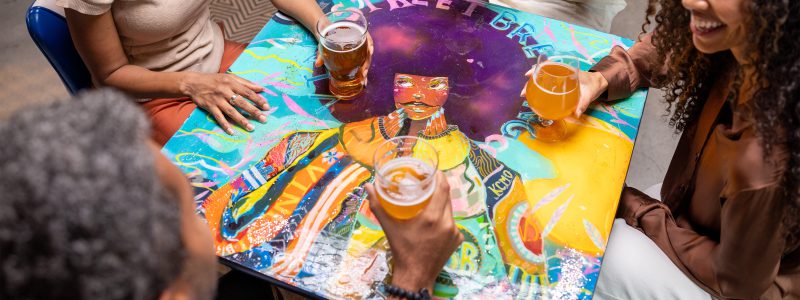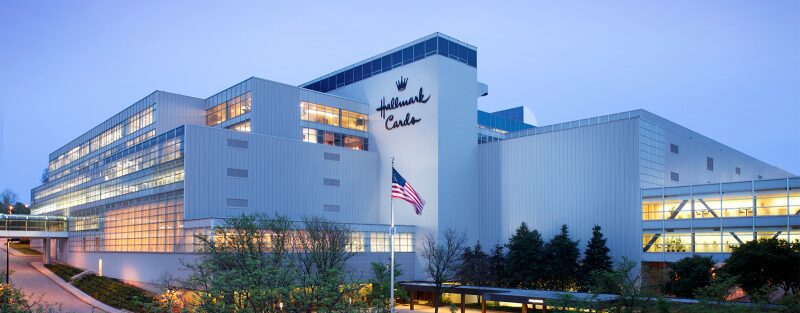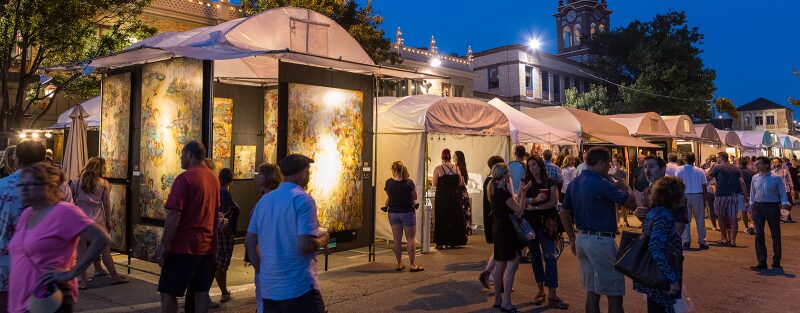Kansas City’s film scene is more than a burgeoning industry attracting more attention by the day—it’s one of the city’s oldest and most culturally significant pastimes.
And now, you can experience that rich history yourself thanks to our self-guided tour. No matter your familiarity with the city, discover KC in an entirely new way—in all its film glory, heyday to resurgence and everything in between.
National WWI Museum and Memorial
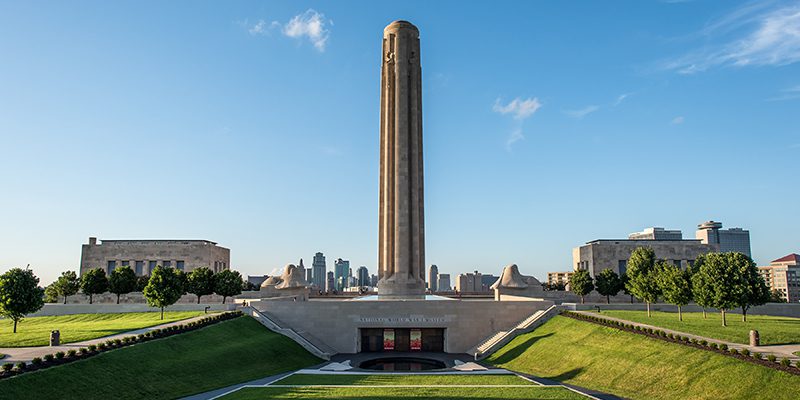
The National World War I Museum and Memorial—an iconic landmark in Kansas City—has been featured in countless television programs and films.
Some movies focus on the Liberty Memorial’s history, while others, like The Day After, used this KC landmark for a far more cinematic purpose. The movie, which was about a nuclear war between the U.S. and Russia, is to this day the most-watched and highest-rated TV movie of all time.
While much of the film was shot in nearby Lawrence, the production made its way eastward for vital scenes in which Liberty Memorial and Kansas City are reduced to rubble. In the final scene, actor Jason Robards walks through the fallout of the attack and witnesses what’s left of Liberty Memorial and the city in a dramatic end to the film.
The memorial also features prominently in the Howard Deutch film, Article 99, which follows a group of doctors at a veteran’s hospital as they fight the bureaucracy and belt-tightening of hospital administrators in order to care for and protect their patients.
The film was set in the now-demolished St. Mary’s Hospital, which once overlooked Liberty Memorial and KC’s Downtown skyline, and featured an incredible cast, including Ray Liotta, Kiefer Sutherland, Forest Whitaker, Lea Thompson and John Mahoney.
Union Station
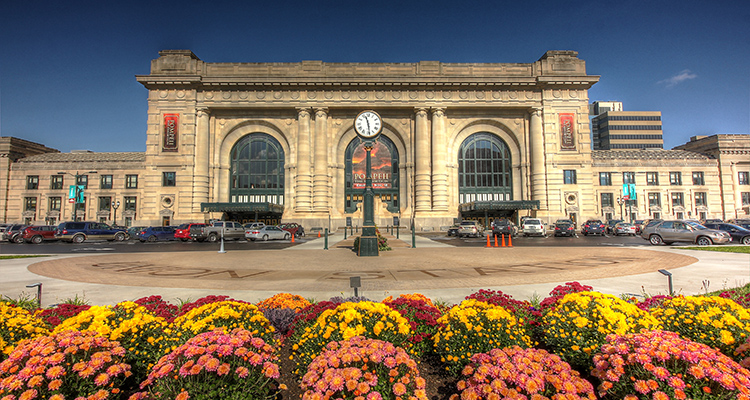
Union Station is one of Kansas City’s most iconic attractions, but its appeal has always stretched far beyond a tourist destination.
This landmark has been featured in hundreds of films, music videos, and TV shows, including HBO’s Truman, NBC’s American Ninja Warrior and Travel Channel’s Ghost Adventures, among others.
Perhaps the landmark’s most famous depiction was in Robert Altman’s film, Kansas City. In this love letter to his hometown, the renowned director set many of his scenes in the historic station. The 1996 film starred Harry Belafonte and Jennifer Jason Leigh, but Union Station feels less like a filming location and more like a supporting character.
The depot had been closed for 10 years prior to Altman’s production, in part due to a steep decline in commercial train travel. Thankfully, the movie made an impact on the city. The crew cleaned the place up, which reminded Kansas Citians of its historic beauty.
Many argue Altman’s decision to set such a large portion of his film in Union Station ignited a local campaign for a $250 million renovation a year later.
Crossroads / Film Row

Looking at it now, you might not believe that this artistic enclave was once one of the biggest Hollywood film distribution centers in the world. Today, we call it the Crossroads Arts District, but for four decades this area was affectionately referred to as “Film Row.”
Spanning four square blocks between 17th and 19th Streets, this area was the home to distribution centers for some of Hollywood’s most prominent studios from the 1920s to the 1960s, including MGM, Warner Brothers, Paramount, Universal, Disney, United Artists and many more.
These offices facilitated the distribution of Hollywood films to theaters across the country. Now, this creative crossroads is home to art galleries, local eateries, boutique shops and quite appropriately, several prominent KC production companies.
KC wasn’t just one of the largest distribution hubs in the country. It also exported some of Hollywood’s greatest stars. Travel to the Crossroads Arts District at 18th Street between Wyandotte and Central in the heart of Film Row and you’ll find Kansas City’s own Walk of Fame, featuring actual stars on the sidewalk that represent some of KC’s most beloved native celebrities, including Joan Crawford, Walt Disney, Jean Harlow, Ginger Rogers and more.
The Arvest Bank Theatre at The Midland
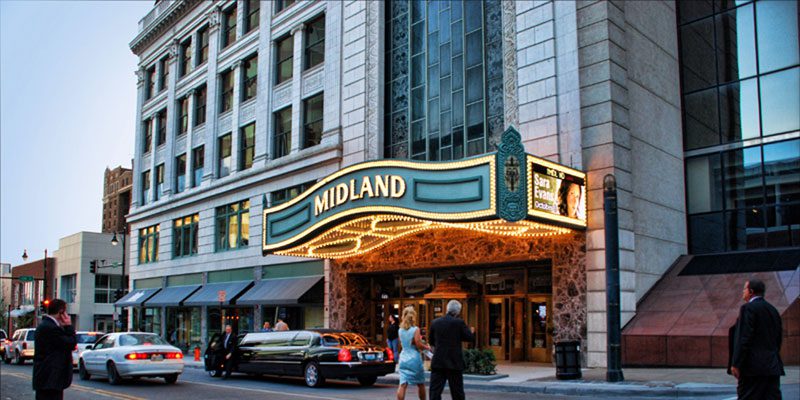
The Arvest Bank Theatre at The Midland was built in 1927 (then known simply as The Midland Theatre) and was designed to showcase both the incredibly popular silent films of the era and live stage entertainment. But the early years of the Midland also marked the revolutionary beginnings of sound cinema.
Upon completion, this theater was the third largest in the country, surpassed only by the Roxy and Capitol Theaters, both in New York City.
The Midland didn’t just show movies. It also served as a filming location. When the film Mr. and Mrs. Bridge, starring Paul Newman and Joanne Woodward, came to town, the location was used in a grand theater scene that required hundreds of local extras.
One of them was 14-year-old KC native and future Hollywood funnyman Jason Sudeikis (a former Saturday Night Live cast member and star of the Horrible Bosses movies). This scene at the Midland was Sudeikis’ first appearance in a movie.
18th and Vine
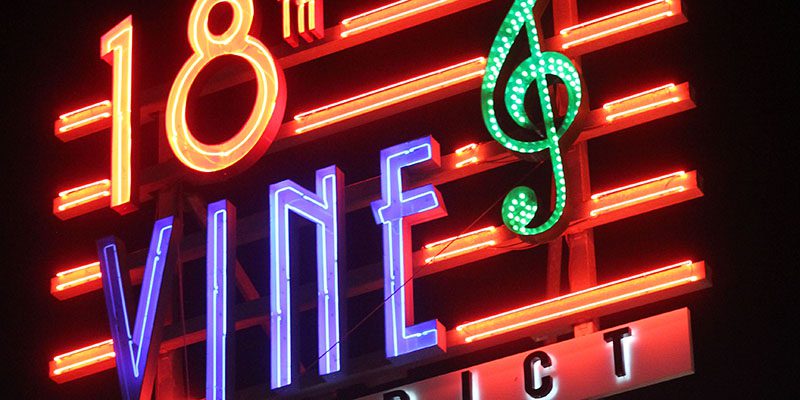
In his film Kansas City, Robert Altman sought to capture the feel of KC in its wide-open heyday—the 1930’s. A time when jazz filled the air, Prohibition was overlooked and political bosses ruled the streets. No place during that time period was as vibrant and exciting as 18th and Vine.
When Altman returned to KC in the ‘90s, he found that this area, which was once a hub for art and culture, had been slowly deteriorating. Altman wanted to recreate the neighborhood that had fascinated him in his teenage years.
The film crew cleaned up the street, creating storefront facades and dressing the windows of then-closed businesses. What’s incredible about this transformation is its lasting impact on the city. Altman’s storefront facades still line the streets of this famous district, which is uncommon, considering most sets from studio productions barely survive days after a film has wrapped, let alone more than two decades.
Turns out that “Pearl Pickens Dress Shop” isn’t real. Not to mention “Owl Bar-B-Q”, “Lucille’s Paradise Dinette” and “Paseo Bootery,” which were all created for Altman’s production and remain as imaginary storefronts.
The 18th & Vine District is home not only to storefront time capsules but to a vibrant music scene and two incredible museums—the American Jazz Museum and the Negro Leagues Baseball Museum.
Both jazz and the Negro Leagues have had a significant impact on Kansas City and the country. So it should come as no surprise that Hollywood has explored these American institutions, and likewise, Kansas City.
One of Kansas City’s most famous jazz sons was alto saxophone player Charlie “Bird” Parker. To this day, Parker is regarded as one of the most influential saxophone players and jazz musicians to ever play.
With a career so iconic and a life so tumultuous, it’s no wonder Clint Eastwood wanted to make a film about the artist. The film Bird, released in 1988 and starring future Oscar winner Forrest Whitaker, follows the rise and eventual fall of this jazz legend, but at the heart of it all is Kansas City.
The film would go on to win an Oscar for Best Sound and Eastwood would win the Golden Globe for Best Director. Meanwhile, Whitaker was awarded the Best Actor award at the 1988 Cannes Film Festival. Visit the American Jazz Museum to see just how important both jazz and Charlie Parker were in shaping Kansas City.
Just across the way you’ll find yourself at the Negro Leagues Baseball Museum, another institution that helped to shape Kansas City. Before the integration of Major League Baseball, black players faced off against one another in games that showcased the talent and skill of some of the game’s all-time greats.
Kansas City was home to the KC Monarchs, the two-time Negro Leagues World Series Champions and first ball club for the most influential players of all time—Jackie Robinson. Before he broke the color barrier in 1947 by signing with the Brooklyn Dodgers, the hall of famer played right here in KC.
The 2013 film 42, starring Chadwick Boseman and Harrison Ford, chronicles Robinson’s historic transition to the majors, and begins with his time here as the star player for the Monarchs. The production held a special premiere of the film in KC to honor the Negro Leagues Museum and Kansas City’s role in Robinson’s career.
Head into the museum and you’ll find yourself viewing a short documentary about the history of this groundbreaking league—and don’t be surprised if you recognize an iconic voice narrating the film. James Earl Jones, the actor who portrayed Darth Vader in the Star Wars franchise, voiced Mufasa from Lion King, and starred in Field of Dreams, lends his iconic voice to this inspirational documentary.
Laugh-O-Gram Studio
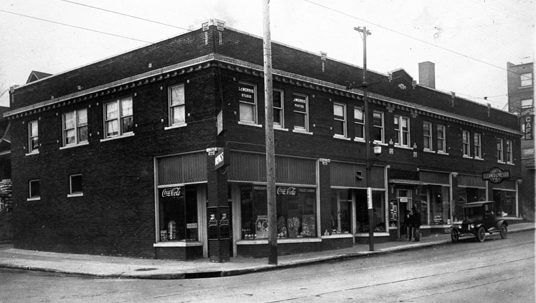
It’s hard to believe that nearly a century ago this unassuming, two-story building housed the offices of the man many call the Father of Animation: Walt Disney.
Occupying nearly 2,500 square feet on the second floor of the building was Disney’s first business, Laugh-O-Gram Studio, where he and fellow animators and friends would begin lifelong careers in animation. Though the studio wasn’t a grand success for Disney, it was where he and several iconic animators got their start and where characters beloved through the ages and around the world were inspired.
It was also in this building that Walt found himself feeding a small mouse. At the time, the mouse was called Mortimer, and was said to sit at Walt’s desk and eat crumbs from Disney’s hands. Before leaving for Hollywood, Disney decided to release the mouse into a nearby field for fear that the cat from the restaurant below would eat his small friend. Legend has it that this KC mouse became the inspiration for the cartoon character everyone knows and loves: Mickey Mouse.
Kansas City truly was the cradle of Hollywood Animation. Walt’s friends and colleagues would have successful careers as well, minus the amusement parks. Fellow animators such as Ub Iwerks, Hugh Harmon, Ruby Isling, Friz Freleng and others would go on to have parts in creating some of the most iconic animated characters of all time, including the Looney Toons, the Pink Panther, Merrie Melodies, Tom and Jerry and many more. These great Kansas Citians left an undeniable mark on a beloved industry.
Visit ThankYouWaltDisney.com/Future to learn more about the Laugh-O-Gram Project and how you can be a part of it.

